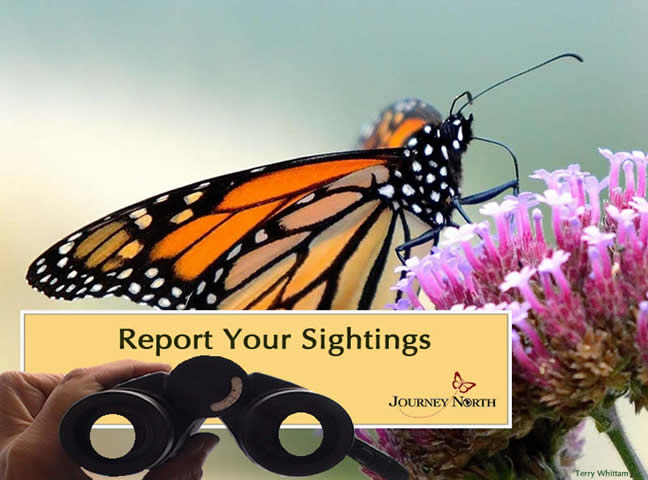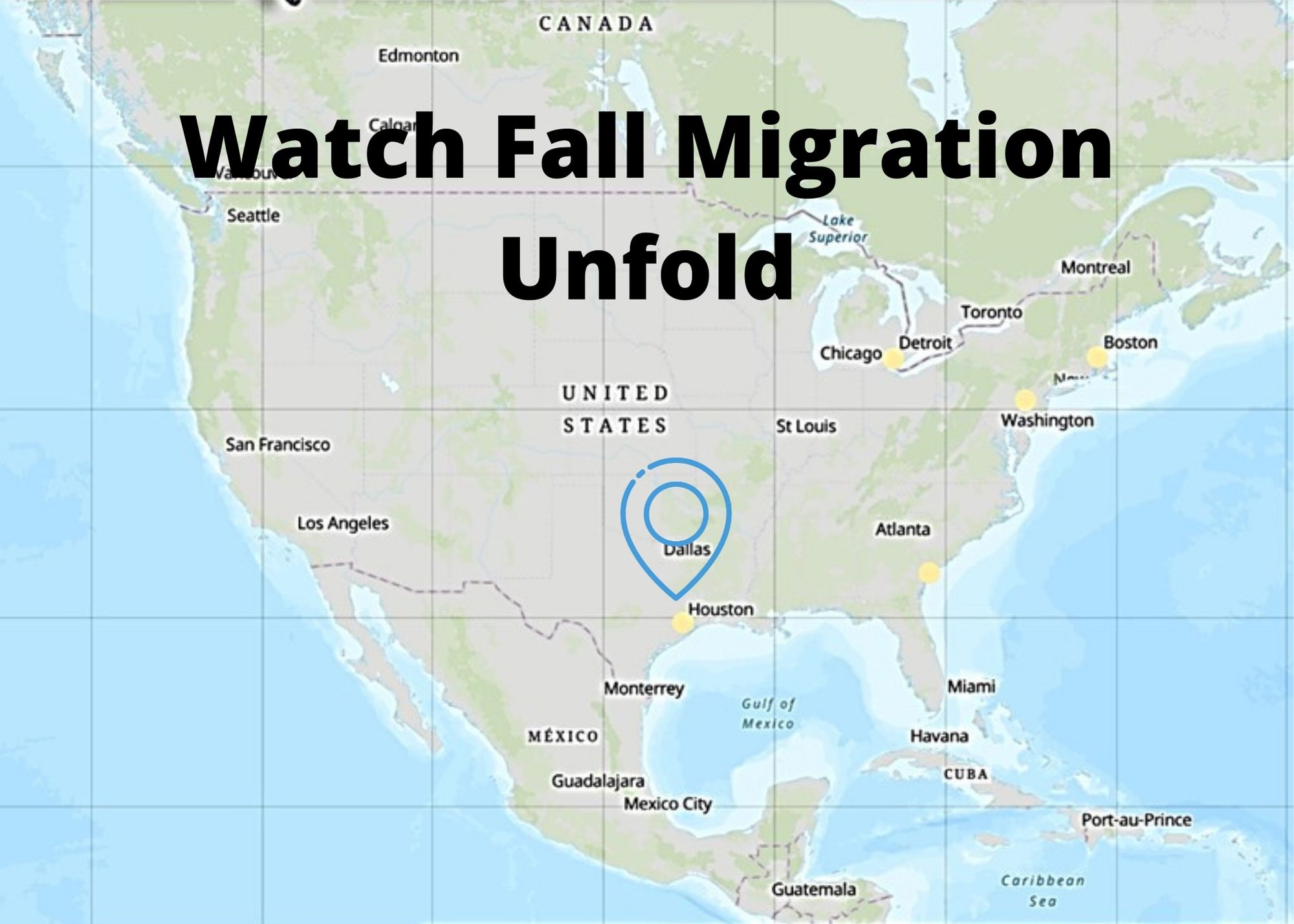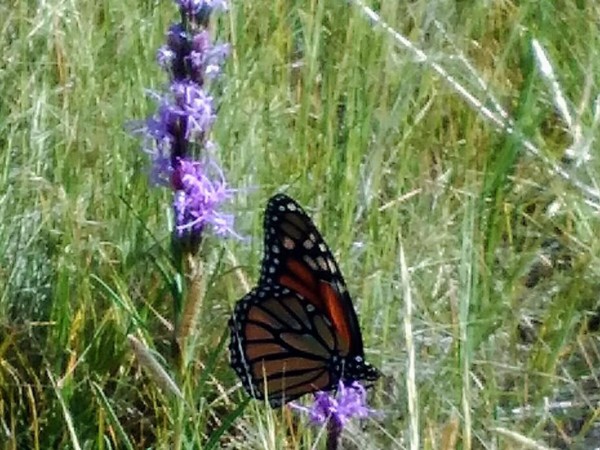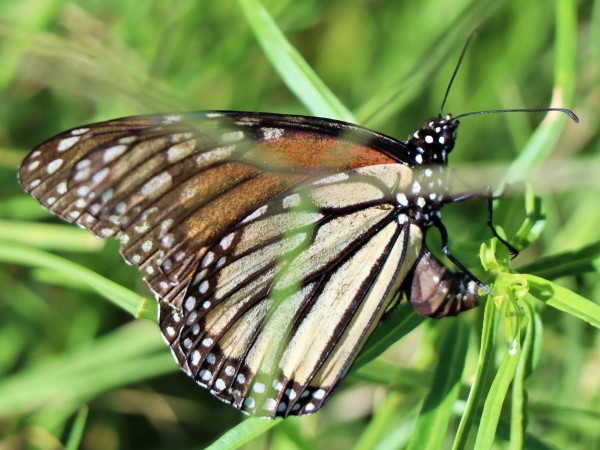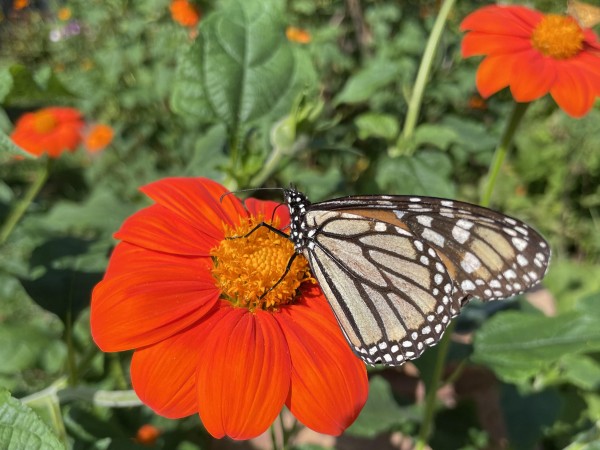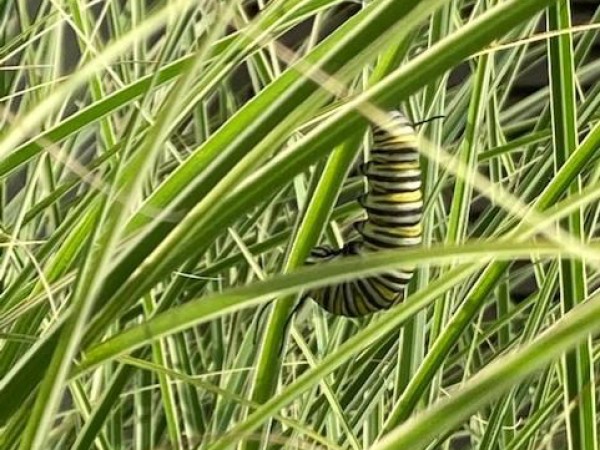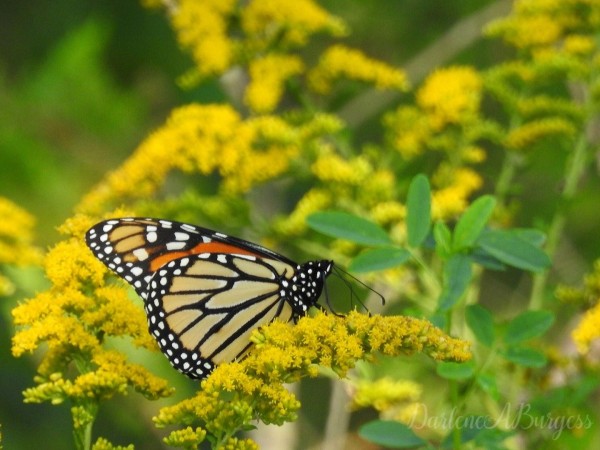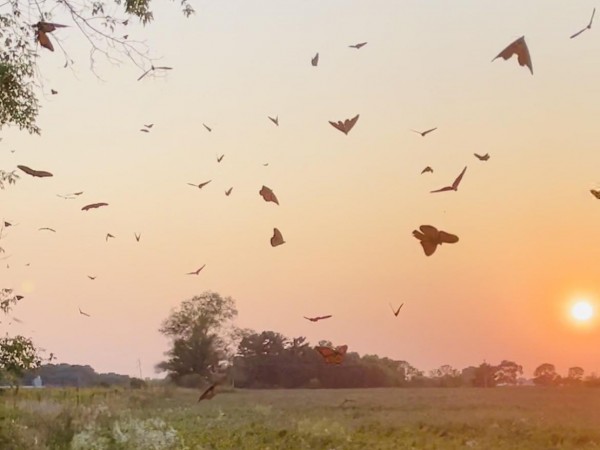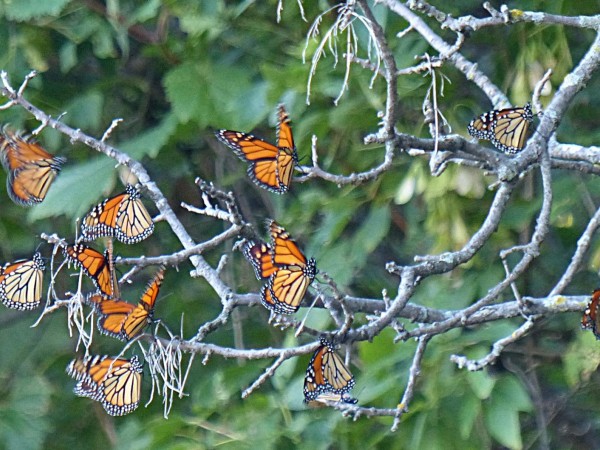Migration Gaining Momentum
September is here and signs of monarch fall migration are becoming more evident. Report your observations of adult monarchs, eggs, larvae, and milkweed.
Momentum Builds
Signs of monarch fall migration are becoming more evident. Throughout North America, Journey North citizen scientists are observing monarchs fueling up on nectar in preparation for a long journey south. In addition to adult monarchs, eggs and larvae are also being reported in large numbers.
Pamela in Franktown, CO: "10:00 AM, monarch was nectaring on liatris in field near Lake Gulch trailhead in Castlewood Canyon State Park. Estimated 75F, clear sky, sunny, no wind. Waystation 9419." (08/26/2021)
James in Mesilla, NM: "1 of 2 monarchs laying eggs within a moderately large whorled milkweed stand along the Rio Grande. This individual is depositing eggs at the base of milkweed leaves." (08/28/2021)
Connie in Hebbville, NS: "Two monarchs on the Joe-Pye weed today - one male, one female." (08/29/2021)
Renee in Asheville, NC: "She [monarch] was on tithonia and also observed laying eggs on milkweed." (08/29/2021)
John in Randolph Center, VT: "[36 monarchs] in the early morning on a south facing slope in a hayfield. Feeding on red clover which is at its peak in this field. I am sure I am underestimating the total number of monarchs." (08/31/2021)
Betty in Strongsville, OH: "Larva in grasses out front ready to pupate." (08/31/2021)
Peak migration reports have largely come from southern Ontario with scattered reports from the Upper Midwest as well. If you witness what seems to be a large number of monarchs (i.e. dozens, hundreds), report your observation(s) under the Monarch PEAK Migration reporting category.
Darlene in Leamington, ON: "Late afternoon Monarchs at Point Pelee. Counted 75 in 45 minutes at Northwest Beach, Visitor Center, base of Tip Tower, along west path down to Tip & flitting about through interior trees. They nectared on Goldenrod, Woodland Sunflowers & Bouncing Bet. A few landed on bare branches in the interior. Most appeared pristine & mostly males seen." (08/28/2021)
Monty in Huron-Kinloss, ON: "Hundreds [of monarchs] on a mainly unused dirt road, starting their journey. The road is about 2 miles long with almost solid crabapple trees on both sides beyond that its all corn/soybean/clover crops. Again there are so many it's hard to count them. It also was around 10 am so they are sucking up the sun and getting mobile. We have never seen this many in such a small area. Really is quite something." (08/29/2021)
Fall Roosts
More fall roosts – almost 40 to-date – have been spotted by Journey North citizen scientists. Many reports have come from the Upper Midwest.
Breanna in Town of Stanton, WI: "There are 1,000s of Monarch Butterflies that have been roosting in my trees for a few weeks." (08/23/2021)
Kathleen in Minneapolis, MN: "This is the second night of the roost. Invited over neighbors across the street to view the roost. We agreed 300 is best guess as it was getting dark, the monarchs kept moving, and more were coming. There were clusters like this all over the place. Single monarchs were also seen hanging in many places." (08/28/2021)
Bruce in Hartley, IA: "We have a small uncoordinated roost this evening...just over a couple dozen individuals are finding branches in the yard and settling in...the first sign so far that the migration has just reached us." (08/29/2021)
Pat in Star Prairie, WI: "A nice bunch of monarchs. They were feeding in the afternoon on alfalfa blooms, maybe a ten acre field. They roosted to the west, mostly shaded by the woods and hills in that direction. Temps were still in the 70s so many roosts for singles and clusters were mostly small.....did spot 13 in one, but a lot of moving from spot to spot in the last hour of sunlight time." (08/30/2021)
Roost Reporting
Monarchs rest at overnight roosts at the end of each migration day. Take a look at the roost map and notice where roosting has occurred in the fall. Roosts show us where large concentrations of migrating monarchs are found. Week by week, the map will reveal the main migration pathways to Mexico and the pace of migration. Much mystery surrounds roosts as they are difficult to study; they don’t last long and can’t be found dependably in the same places every year.
Fall roost reports should reflect the number of monarchs observed within a roost for a single night. In your comments, let us know the following information: when the roost formed; nearby nectar sources; overnight temperatures and wind direction; tree species monarchs were roosting on; and how you estimated the number of monarchs. Photos are always welcome and provide a voucher for your observation.
Report Your Observations
When you observe monarchs, we want to know. Start reporting now and continue to do so until you see your last monarchs of the fall migration season.
Here is a rundown of what to report during the fall migration season.
- Monarch Adult Sighted
- Monarch Egg Sighted
- Monarch Larva Sighted
- Monarch (OTHER Observations)
- Monarch PEAK Migration
- Monarch Fall Roost
- Milkweed Sighted


